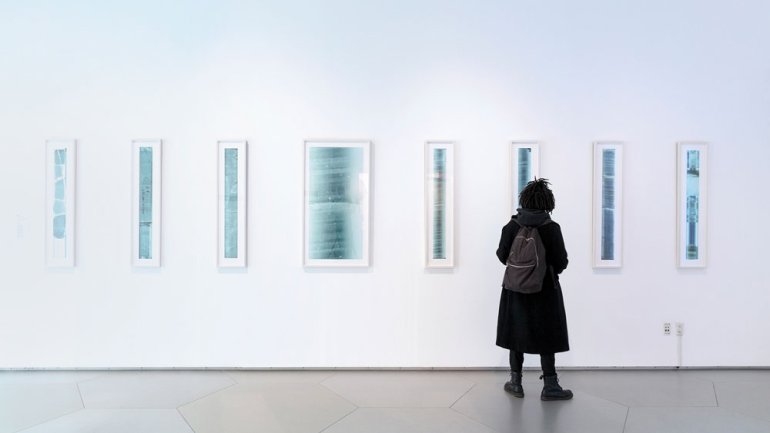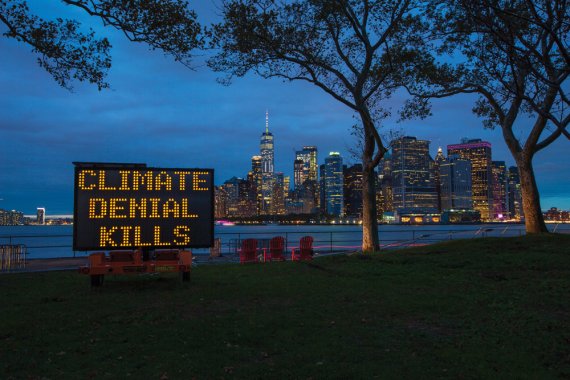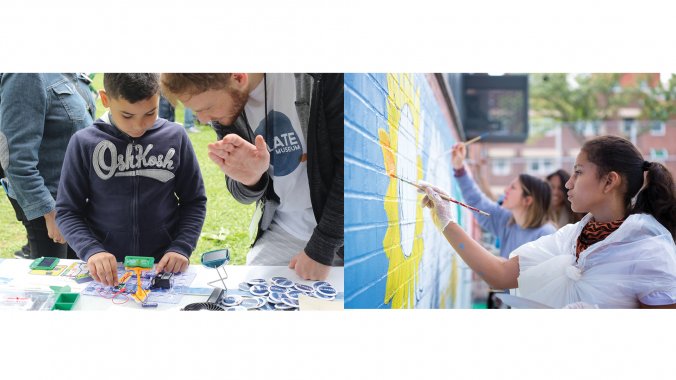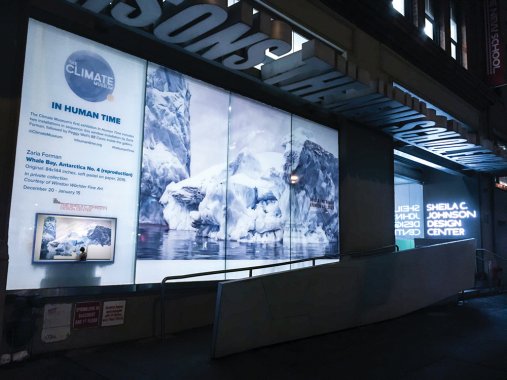Art for Earth's Sake
Art for Earth's Sake
Building a museum from the ground up is a slow, laborious process: deciding on a mission, raising money, finding a space, amassing a collection, organizing exhibitions. It can take years to move from initial idea to realized vision. But the Climate Museum has no such luxury, as it takes on perhaps the most pressing issue of our time. As an early visitor said, “Never has this made more sense than now.”
Director Miranda Massie conceived of the museum in 2012, after Hurricane Sandy; it was founded in 2014 and mounted its first exhibition in 2017. The institution aims to open a “museum lab” in the next year or so to test ideas, after which it will begin design and construction of a permanent building. In the meantime, it’s found ways to become a public presence through educational exhibitions and programming around the city. Organizers think that an interdisciplinary approach, with art as an integral element, is the best way to reach their audience. “Climate change is just such an overwhelming problem,” says communications coordinator Claudia Villar-Leeman. “It’s so abstract; the impacts are really distant in nature from the cause. … Art has a way of stopping people in their tracks a little bit more.”
In the museum’s first show, “In Human Time,” artists Zaria Forman and Peggy Weil examined polar ice (and humanity’s effects on it) in film, photos, and pastel drawings. Recent exhibitions include “Climate Signals” this past fall, a series of LED highway signs – the kind that usually warn of a detour or delay – stationed around New York neighborhoods, featuring messages such as “CLIMATE CHANGE AT WORK” and “VOTA ECO LOGICAMENTE” (“Vote eco-logically” in Spanish). This spring, they hosted Climate Speaks, a spoken-word program engaging students in discussions about the intersection of climate change and social justice, that culminates in a performance at the Apollo Theater in June.
If creative programming has been a logistical requirement for a museum that doesn’t yet have its own space, it’s also been a necessity for a subject hat seems to grow more complex by the week.
“We’ve got to be really flexible in terms of thinking about how we want to present the different programs that we have in mind, especially because it’s always changing – what’s going on in the news and what people need,” development coordinator Amanda Nesci says. “I feel like that tension has definitely shaped how we’re doing programming right now,” Villar-Leeman adds, “because it feels so urgent to get climate programming out there, immediately.” The museum has reached beyond the five boroughs; last year, staff members attended the first international symposium on museums and climate change, where they spoke with curators from across the world interested in increasing their climate-related programming.
Though the organization hasn’t yet put out any formal open calls, it is constantly researching and seeking out artists to collaborate with. The ventures grow into shared projects that honor both creative expression and the responsibility to present accurate information. “With both of our bigger arts programs,” Nesci says, “the artists have come to us with an idea, and then we’ve worked with them to refine it and align it with the Climate Museum’s mission.” That mission is shaped by an advisory council that includes professors, climate scientists, lawyers, design professionals, and representatives from environmental groups such as the National Audubon Society and the National Academy of Sciences. (Massie herself is a former civil rights litigator.)
The Climate Museum is suited to this moment in planetary history, but its unusual status as an institution has forebears. Nesci cites the Museum of Food and Drink in Brooklyn as a predecessor; like the Climate Museum, it organizes itself around a subject, not a discipline or era. And like the Climate Museum, MOFAD got its start by producing interdisciplinary work in pop-up spaces before finding a permanent location.
At this early stage, Massie and staff are happy with prompting conversation, keeping the realities of climate change in the mind of the public. Last year, Emily Raboteau wrote an essay for the New York Review of Books about visiting the signs in “Climate Signals” with fellow writer Mikael Awake, whom she had met by tweeting about the exhibition. The two traveled around the city to find each illuminated board. “In spite of our sensory overload, or because of it,” Raboteau wrote, “the climate signs have demanded our attention.”
This is the power of art: to breathe new life – and maybe even hope – into a daunting and difficult topic. “The museum’s goal is to break the climate silence and create spaces where people can come together, face the issue head-on, and feel like they’re not alone, in terms of taking action,” Villar-Leeman says. “And together, we can start to overcome this challenge.”







